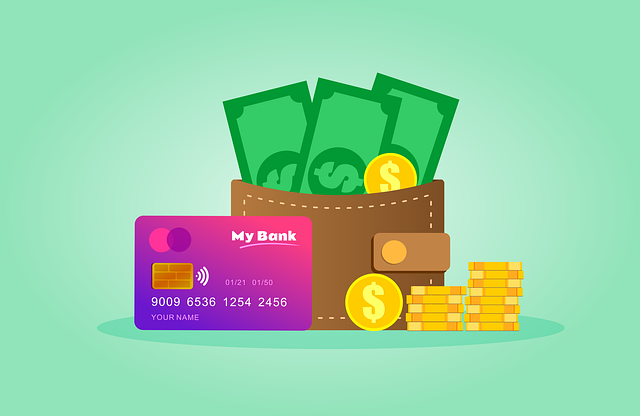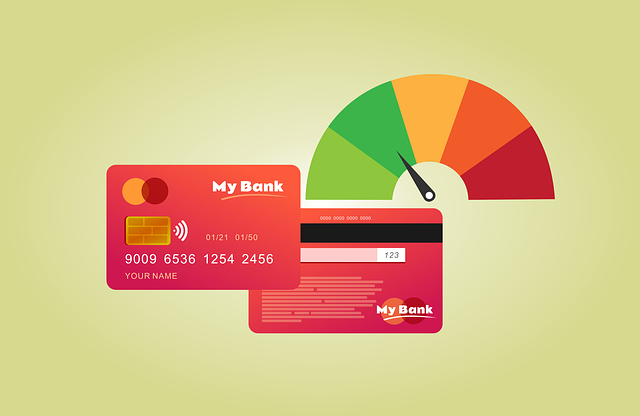Every time a customer taps “pay now” on your website, debit card transactions often result in money vanishing from your profit margins. In 2025, the average small business loses 3.5% of each sale to credit card transaction fees and other transaction costs.
You’re busy running your business. You haven’t had time to analyze these costs, including the details in your monthly statement. Your financial institution and payment processor know this. They count on it.
In 2025, payment processing has become more complex and more expensive due to the role of credit card issuers. Mobile payments, cryptocurrency options, and biometric systems each have their fee structures. Many small business owners don’t realize they’re paying premium rates for standard services.
Are you overpaying? Almost certainly, because businesses pay transaction fees that can be reduced. For small business owners looking to deepen their financial understanding, especially in managing transaction fees more effectively, exploring fundamentals like debits and credits can be invaluable. A clear grasp of these concepts aids in accurate bookkeeping and financial planning, which directly impacts how you handle and interpret charges from transaction fees. To get started, check out this comprehensive guide on managing debits and credits effectively in small business accounting.
Do your current processors offer the best rates? Probably not.
Could you reduce these costs by 30% or more this year? Absolutely.
This guide breaks down exactly what transaction fees are costing your small business, with real examples from companies just like yours. More importantly, I’ll show you proven strategies to reduce per-transaction fees and these costs without sacrificing customer convenience or security.
The difference could mean thousands of dollars back in your business, where it belongs, especially from credit card transaction fees.
Credit Card Transaction Fees
Most merchants in the U.S. and Canada pay between 2.0% and 3.2% in total credit card processing fees per transaction, averaging about 2.34% overall
Save 80% of delivery management time
We handle everything:
- Dedicated operations manager
- Real-time tracking dashboard
- Automated customer notifications
- Urgent issue resolution
Understanding Merchant Fees: Top Examples for Small Businesses
Transaction fees directly impact your profit margins and cash flow
Different payment methods carry varying fee structures
Optimizing your payment acceptance strategy can save thousands annually
Credit Card Processing Fees
Credit card processing fees and the acquirer fee represent one of the most significant transaction costs for small businesses today. These fees typically range from 1.5% to 3.5% of each transaction, creating a substantial impact on profit margins for businesses with high sales volumes or thin margins.
The fee structure consists of three main components. First, the interchange fee goes directly to the card-issuing bank and varies based on card type (rewards cards cost more to process than standard cards). Second, assessment fees go to the card networks like Visa and Mastercard. Third, payment processor markup fees cover the costs and profit margins of the companies handling your transactions.
Small businesses often face higher rates due to lower transaction volumes.
Credit Card Fees by Networks
Credit card processing fees vary by card networks; for example:
Mastercard interchange from 1.15% + $0.05 to 2.95% + $0.10
Visa interchange from 1.15% + $0.05 to 2.70% + $0.10
American Express interchange from 1.43% + $0.10 to 3.30% + $0.10
Interchange-Plus vs. Flat-Rate Pricing
Two common pricing models exist for credit card processing. Interchange-plus pricing separates the interchange fee, assessment fee, and processor markup, providing transparency but creating complex statements. This model typically benefits businesses processing over $10,000 monthly.
Flat-rate pricing combines all fees into a single percentage (often around 2.9% plus a fixed fee per transaction). While more expensive for larger businesses, it provides simplicity and predictability for smaller operations. Square, PayPal, and Stripe primarily use this model.
Card-Present vs. Card-Not-Present Transactions
The physical presence of a card significantly impacts fees. Card-present transactions (in-store swipes or chip insertions) typically cost 0.5-1% less than card-not-present transactions (online, phone, or manually entered). This difference exists because card-not-present transactions carry higher fraud risk.
For retail businesses, investing in EMV chip readers rather than relying on manually entered transactions can save thousands annually. A boutique clothing store processing $30,000 monthly could save approximately $1,800 yearly by ensuring all possible transactions use the physical card.
Bank Account Transfer Fees
Bank transfers, including ACH (Automated Clearing House) and wire transfers, provide alternatives to card payments with different fee structures. These methods move money directly between bank accounts without card network involvement.
ACH transfers typically cost between $0.20 and $1.50 per transaction, regardless of the amount transferred. For businesses accepting larger payments, this flat-fee structure creates significant savings compared to percentage-based card fees. A contractor receiving a $10,000 payment might pay $300 in credit card fees versus just $1 via ACH—a compelling difference.
Wire transfers offer same-day settlement but at higher costs, typically $15-50 for domestic transfers and $35-75 for international transfers. These fees may be charged to both the sender and recipient, creating a double cost impact.
Bank Transfer Fee Optimization
Small businesses can optimize bank transfer costs by batching payments. Rather than processing individual transfers daily, consolidating them weekly reduces the total number of transactions and associated fees. A service business processing 100 monthly customer payments individually might pay $150 in fees, while batching could reduce this to $30.
Businesses should also consider the timing implications. While card payments typically settle within 1-3 business days, ACH transfers may take 3-5 days. This delay affects cash flow planning, especially for businesses with tight operating margins. Choosing the right financial institution plays a critical role in managing these transaction costs and optimizing cash flow. Selecting one of the best banks tailored for small business needs in 2025 can provide more favorable terms, better payment processing options, and dedicated support. For a comprehensive overview, explore our guide on the top recommended banks for small businesses.
Credit Card Transaction Fees
Visa’s misuse of authorization fee increased from $0.09 to $0.15 in 2025, and Mastercard’s excessive authorization attempts fee rose from $0.30 to $0.50, adding costs to merchants for failed transactions
Mobile Payment Fees
Mobile payment platforms like Apple Pay, Google Pay, and Samsung Pay have transformed how customers pay, but their fee structures deserve close attention. These services typically process payments as card transactions, inheriting the same underlying fee structure.
When customers tap their phones to pay, the transaction follows the card payment network rails, incurring interchange fees, assessment fees, and processor markups. However, mobile payments offer a significant benefit: they qualify as card-present transactions even though no physical card appears, resulting in lower fees than online payments.
Mobile payment providers may charge additional fees beyond standard card processing costs. These often include monthly platform fees ($20-60), hardware rental/purchase costs, and sometimes per-transaction fees specific to the mobile payment type.
Online or Card-not-Present Transactions Fees
Online or card-not-present transactions usually have higher fees, ranging from 2.25% to 2.50% per transaction, compared to in-person transactions
NFC Technology and Fee Implications
Near Field Communication (NFC) technology powers most mobile payment systems, requiring compatible point-of-sale terminals. While these terminals cost $200-600 upfront, they typically process mobile payments at the lowest possible interchange rates due to their enhanced security features.
Small businesses should weigh the cost of upgrading equipment against potential savings. A coffee shop processing 5,000 monthly transactions might save $125-250 monthly by accepting mobile payments at card-present rates versus manually entered card information.
Payment Gateway Fees
Payment gateways serve as the digital equivalent of physical card terminals, connecting online transactions to the banking network. They represent an additional layer of fees for e-commerce businesses that physical retailers don’t face.
Typical gateway fees include monthly subscription costs ($15-30), per-transaction fees ($0.10-0.30 per transaction), and sometimes percentage-based fees (0.1-0.5% of each transaction). These fees stack on top of standard credit card processing fees, creating a higher overall cost for online sales.
Integration Costs and Technical Considerations
Beyond direct gateway fees, implementation costs affect the total expense. Some gateways require developer assistance for integration, costing $500-5,000 depending on complexity. Others offer plug-and-play solutions for common e-commerce platforms like Shopify or WooCommerce.
Small businesses must consider both direct fees and technical requirements when selecting payment gateways. A simple implementation with slightly higher transaction fees often proves more cost-effective than complex systems requiring ongoing technical support.
Foreign Transaction Fees
Businesses serving international customers face additional fee considerations. Foreign transaction fees and scheme fees apply when processing payments from cards issued in different countries or currencies, adding complexity to global sales and fees incurred.
These fees typically range from 1-3% on top of standard processing fees. A U.S. business accepting a payment from a European customer might pay 2.9% in standard processing fees plus an additional 1.5% foreign transaction fee—a total of 4.4%.
Currency conversion fees present another consideration. When customers pay in their local currency, someone must convert that currency to the merchant’s preferred currency. This service typically costs 2-3% above the interbank exchange rate.
Dynamic Currency Conversion
Some payment processors offer dynamic currency conversion (DCC), allowing customers to see prices in their local currency while paying in yours. While convenient for customers, DCC typically embeds unfavorable exchange rates, effectively creating a fee of 3-5%.
Small businesses can minimize these costs by working with payment processors specializing in international transactions. Platforms like Stripe Atlas or Payoneer often provide more competitive rates for global payments than traditional banks or generic payment processors.
For businesses with significant international sales, establishing local bank accounts in key markets can dramatically reduce fees. A U.S. business selling frequently to Canadian customers might save 2-3% per transaction by accepting Canadian dollars directly rather than converting each payment.
“Merchants can negotiate their card processing fees with their merchant service provider, and they are not set in stone.”
A transaction fee represents any cost associated with moving money between parties. This includes credit card processing fees, bank transfer charges, payment gateway costs, currency conversion fees, and mobile payment expenses. While consumers might see these as minimal costs, they significantly impact business profitability.
The transaction fee model varies widely across payment methods. Percentage-based models (like credit card processing) charge a portion of each transaction amount. Flat-fee models (like many ACH transfers) charge the same amount regardless of transaction size. Hybrid models combine both approaches, charging a percentage plus a fixed amount per transaction.
When explaining transaction fees to clients, focus on value rather than cost. Emphasize that these fees cover fraud prevention, instant payment verification, convenient payment options, and the infrastructure supporting fast, secure transactions. While fees impact your pricing, they enable better service and payment flexibility for customers.
Reducing Transaction Costs: Effective Strategies for 2025
Strategic negotiation with payment processors can save businesses 15-30% on transaction fees.
The right combination of payment systems reduces costs while maintaining customer convenience.
Implementing non-card payment incentives can shift 20-40% of transactions to lower-fee methods.
Negotiating with Payment Processors
Payment processors expect negotiation, yet many small business owners accept the first rate offered. This reluctance to negotiate costs American small businesses an estimated $4.5 billion in excess fees annually, according to a 2024 Federal Reserve study.
Starting with your current payment processor makes sense since they already understand your business volume and history. Prepare by gathering three months of processing statements and identifying your average transaction size, monthly volume, and current effective rate (total fees divided by total sales). Armed with this data, you can approach negotiations confidently.
When negotiating, focus on these key areas:
Interchange-plus pricing: Request this more transparent pricing model if you’re currently on tiered or flat-rate pricing
Volume discounts: If your business processes over $25,000 monthly, you qualify for better rates
Statement fees: These monthly charges ($5-25) can often be eliminated entirely
PCI compliance fees: Often negotiable or removable, saving $100-200 annually
The timing of your negotiation matters significantly. Research by the Electronic Transactions Association shows contract renewal periods give you maximum leverage, with 70% of businesses securing better terms during these windows.
Bundling Services for Better Rates
Payment processors increasingly offer complementary services like point-of-sale systems, inventory management, and customer loyalty programs. By bundling these services with your payment processing, you can often secure rate reductions of 0.1-0.3% per transaction.
For example, a restaurant processing $40,000 monthly that bundles payment processing with a POS system might save $120 monthly on transaction fees, essentially offsetting most of the POS system cost. Square, Toast, and Clover all offer such integrated bundles with tiered pricing.
When bundling, be careful to calculate the total cost of ownership. Some processors offer seemingly attractive processing rates while charging premium prices for their additional services. Request a comprehensive quote including all fees before committing.
Choosing the Right Payment System
Payment processor selection requires balancing multiple factors, including fees, features, settlement times, and customer service. The decision impacts not only your costs but also operational efficiency and customer experience.
In 2025, the payment processor landscape will have evolved to include more specialized options for different business types. For example, high-volume/low-ticket businesses (coffee shops, quick-service restaurants) typically benefit from processors offering lower fixed per-transaction fees even with slightly higher percentage rates. Conversely, low-volume/high-ticket businesses (furniture stores, jewelers) should prioritize lower percentage rates.
When evaluating processors, examine the complete fee structure:
Interchange fees: Non-negotiable fees paid to card-issuing banks (typically 1.15-3.15%)
Assessment fees: Non-negotiable fees paid to card networks (0.13-0.15%)
Payment processor markup: The negotiable portion of your fees (0.2-0.5% plus $0.05-0.30 per transaction)
Monthly fees: Statement fees, PCI compliance fees, monthly minimums, etc.
Equipment costs: Terminal purchase/lease costs, often negotiable
Settlement timing also significantly impacts your cash flow. Some processors offer next-day funding as standard (Square, PayPal), while others charge additional fees for faster access to your funds. For businesses with tight cash flow, paying slightly higher processing rates for faster settlement may make financial sense.
Retail Business and Credit Card Transaction Fees
Retail businesses generally pay lower credit card fees (1.3%–2.7%) than eCommerce businesses (1.8%–3.5%) due to higher fraud risk online
Processor Comparison Framework
Create a standardized comparison framework based on your specific business model. For a retail business processing $30,000 monthly with an average transaction size of $75, your comparison might look like this:
Processor | Effective Rate | Monthly Fees | Settlement | Setup Costs | Total Monthly Cost |
|---|---|---|---|---|---|
Processor A | 2.6% + $0.10 | $15 | Next-day | $0 | $810 |
Processor B | 2.1% + $0.20 | $25 | 2-day | $200 | $665 |
Processor C | Tiered | $0 | Same-day (+0.5%) | $300 | $795 |
For e-commerce businesses, additional considerations include:
Gateway integration capabilities
Shopping cart compatibility
Recurring billing functionality
International payment support
Currency conversion costs
Discount Incentives for Non-Card Payments
Credit card processing fees typically range from 2-3.5% of transaction value. By incentivizing customers to use alternative payment methods, including debit cards, businesses can significantly reduce these costs. The Cash Discount Program, permitted under the Durbin Amendment, allows businesses to offer price reductions for customers paying with cash or other low-fee methods.
When implementing discount incentives:
Communicate the discount: Post visible signage explaining the cash discount program (e.g., “5% discount for cash payments”)
Train staff thoroughly: Employees should be able to explain the program to customers without creating friction
Set appropriate discount levels: The discount should be less than your card processing fees, but attractive enough to change behavior.
Legal Considerations for Discount Programs
Different states have varying regulations regarding cash discount programs and credit card surcharges. While the Durbin Amendment allows cash discounts nationally, ten states currently prohibit credit card surcharges (the practice of adding fees for card payments rather than discounting for cash).
Work with your payment processor to ensure your discount program complies with:
State-specific regulations
Card network rules
Consumer protection laws
The distinction between a “cash discount” and a “credit card surcharge” is critical from a legal perspective, though functionally similar. The former is generally permitted, while the latter faces more restrictions.
Batch Processing and Transaction Timing
Every transaction incurs a base cost. By batching similar transactions together, businesses can reduce the per-transaction component of payment processing fees. This strategy is particularly effective for subscription-based businesses, recurring services, and B2B companies.
For example, a software company charging customers $50 monthly could save approximately $0.20-0.30 per customer per month by processing quarterly instead of monthly. For 1,000 customers, this represents $600-900 in quarterly savings.
Implementation strategies include:
Offering slight discounts for customers who prepay quarterly or annually
Batching refunds to process together
Scheduling recurring billing on specific days rather than anniversary dates
Transaction timing also affects interchange rates. Mid-qualified and non-qualified transactions (those with higher fraud risk or missing information) incur higher fees. By setting up systems to capture complete transaction data and settling transactions promptly, businesses can optimize their interchange categories.
Seasonal Strategy Adjustments
Businesses with seasonal fluctuations should consider adjusting their payment processing strategy throughout the year. During peak seasons, focus on convenience and processing speed to maximize sales. During slower periods, prioritize cost reduction.
Some processors offer seasonal hibernation options, allowing businesses to pause monthly fees during inactive periods while maintaining their merchant account. For seasonal businesses, this feature alone can save hundreds of dollars annually.
Leveraging Technology to Reduce Transaction Costs
Modern payment technology offers several ways to reduce transaction costs beyond simply negotiating rates. These technical approaches, especially for in-person payments, can yield significant savings without affecting customer experience.
Address Verification System (AVS) optimization: For card-not-present transactions, proper AVS implementation can reduce interchange rates by qualifying for better rate categories. Ensure your system is configured to submit complete address information with every transaction.
Token-based systems: These systems replace sensitive card data with secure tokens, reducing PCI compliance costs and potentially qualifying for better interchange rates through enhanced security.
Level 2/3 data: B2B businesses can significantly reduce interchange rates (sometimes by 0.5-1%) by submitting additional transaction data. This includes:
Level 2: Customer codes, tax amounts, and purchase order numbers
Level 3: Line-item details, shipping information, and tax information
For businesses processing B2B transactions or government payments, implementing Level 2/3 data capabilities should be a priority. The savings typically far outweigh the implementation costs.
Open Banking Solutions
Open banking initiatives have created new low-cost payment options. These systems use APIs to connect directly to customer bank accounts, bypassing traditional card networks and their associated fees.
Services like GoCardless, Trustly, and Plaid enable businesses to accept payments directly from customer bank accounts with fees typically 50-70% lower than credit card processing. The European PSD2 directive and similar initiatives worldwide have accelerated these alternatives.
For recurring payments, especially, open banking solutions offer significant advantages:
Lower transaction costs (typically 0.5-1% vs. 2-3.5% for cards)
Reduced failed payment rates
Improved security with bank-level authentication
Faster settlement times
Credit Card Payments with Card Transaction Fees

Transaction fees aren’t just another business expense—they directly affect your bottom line. In 2025, small businesses that take the time to understand these costs gain a significant advantage. By comparing credit card processors, negotiating better rates, and considering alternative payment methods, you can save thousands of dollars annually.
Global Payment Processing Market
The global payment processing market was valued at $61.1 billion in 2023, expected to grow significantly, with cross-border eCommerce driving volume and fee collection
Remember that the payment landscape is changing rapidly. Cryptocurrency options and biometric systems are becoming mainstream, offering new ways to reduce traditional processing costs. Your payment strategy should balance current needs with future trends.
Most importantly, make intentional choices about your payment systems. The right provider offers more than just competitive fees—it provides security, integration, and responsive support when problems arise.
Take action today: Audit your current transaction costs, contact providers about better rates, and explore alternative payment methods that might work for your customers. Small changes to your payment approach can lead to significant savings over time. Additionally, choosing the right business checking account can complement your payment strategy by minimizing bank fees and improving cash flow management. For a detailed comparison, check out the latest insights on the top business checking accounts available in 2025 to find one that aligns with your company’s needs.
Your business deserves to keep more of what it earns. With the strategies outlined in this guide, you’re now equipped to make that happen.














